In Photos: Experience Ancient Jerusalem's Splendor with Virtual-Reality App
A historic icon
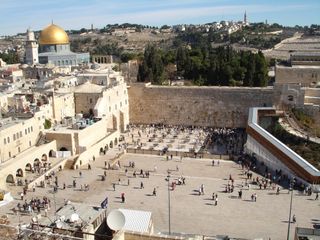
Jerusalem's Western Wall is one of the most iconic cultural sites in the ancient city. The layers of stone blocks at the base of the wall were laid around 20 B.C., when Temple Mount and the Jewish Second Temple were rebuilt by the Roman "client-king" of Judea, Herod I.
A new app for smartphones and portable virtual-reality headsets, called Lithodomos VR, offers a view of the Western Wall and other historic sites in Jerusalem as they looked at the height of the city's splendor in the first century A.D.
A look back

The Lithodomos VR app uses three-dimensional, 360-degree virtual reality (VR) recreations of the architecture of Jerusalem as it looked 2,000 years ago, based on archaeological research about the city at that time.
At the Western Wall, visitors can use the app on a portable VR headset and smartphone to directly compare the ancient and modern views of the scene from the same location.
A good viewpoint
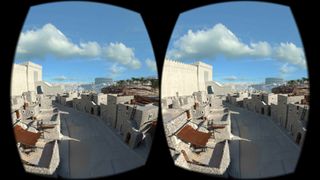
Because the modern plaza at the Western Wall is about 50 feet (15 meters) higher than the fist-century city streets, the virtual reality view in the Lithodomos app shows the scene from a point above the ancient houses, to keep the same perspective.
The boss
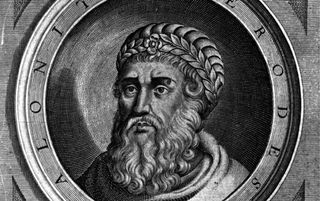
The virtual reconstructions of ancient Jerusalem in the Lithodomos app show the city as it appeared after the rebuilding program started by Herod I, a Jewish nobleman who was installed as the King of Judea by the Roman in 36 B.C. Herod I reigned until his death in 4 B.C.
In the opinion of many historians, Herod was an unpopular tyrant who secured his reign by assassinating many of his relatives and rivals.
Sign up for the Live Science daily newsletter now
Get the world’s most fascinating discoveries delivered straight to your inbox.
Terribly tragedy
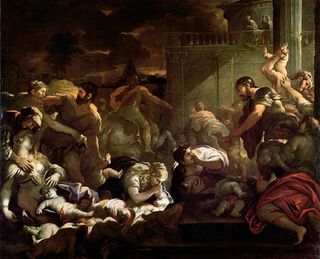
According to the Christian New Testament, Herod ordered the "Massacre of the Innocents" – the execution of every young male child born in Bethlehem – after learning about the birth of the infant Jesus from the visiting Magi – the "three kings" or "three wise men" of biblical tradition.
Historians have found no evidence for the massacre apart from the New Testament account, but historians note that it would have been entirely in keeping with what is known of Herod's character.
Making a mark

Herod left his mark on Jerusalem by enclosing the sacred precinct now known as Temple Mount with 65-feet-tall (20 meters) stone walls and rebuilding the Jewish Second Temple on the platform on its summit.
He also built a new palace for himself in the Upper City, which was linked by a private bridge to the courts of the temple.
The Western Wall in modern Jerusalem is the remaining part of the ancient wall nearest to where the temple stood, and is regarded as one of the holiest sites in Judaism.
Recovery
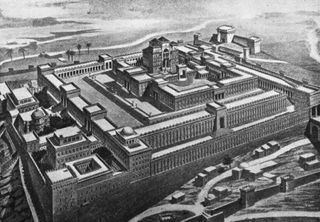
The Second Temple was built on the traditional site of the First Temple, or Solomon's Temple, by Jews returning to the city from exile after the Persian conquest of Babylon in 539 B.C.
According to Jewish tradition, the First Temple was built on the orders of the biblical King Solomon in 832 B.C. It was destroyed when the city was sacked and its inhabitants enslaved by the Babylonian king Nebuchadnessar in 587 B.C.
This image shows a reconstruction of Solomon's Temple based on descriptions in the Bible.
A bit of perspective

The Lithodomos VR app also features a virtual reality view of the city from a bridge leading from the streets near the Western Wall to one of the entrances to the sacred precinct on Temple Mount.
Massacre
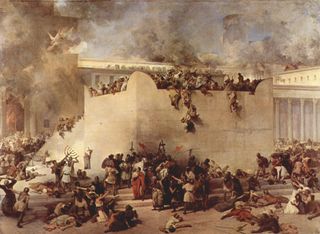
In 70 A.D., after a rebellion in Jerusalem against Roman rule and the Herodian dynasty, Roman troops sacked the city and killed or enslaved many of its citizens.
The Jewish Second Temple rebuilt by Herod was plundered and burned, and many of its stones were cast down from Temple Mount.
Conquered

This frieze on the triumphal Arch of Titus in Rome shows Roman soldiers leading away slaves and spoils from the Jewish temple after the sack of Jerusalem in 70 A.D.
A Roman temple to Jupiter was built on the former site of the temple.
Present-day view

Today, the summit platform of Temple Mount in Jerusalem is enclosed by the Haram esh-Sharif ("Noble Sanctuary"), one of Islam's holiest sites, which include the Al-Aqsa mosque and the shrine of the Dome of the Rock, built in the seventh century A.D.
The Western Wall is on the side of Temple Mount on the lower left of this image.
Tom Metcalfe is a freelance journalist and regular Live Science contributor who is based in London in the United Kingdom. Tom writes mainly about science, space, archaeology, the Earth and the oceans. He has also written for the BBC, NBC News, National Geographic, Scientific American, Air & Space, and many others.
